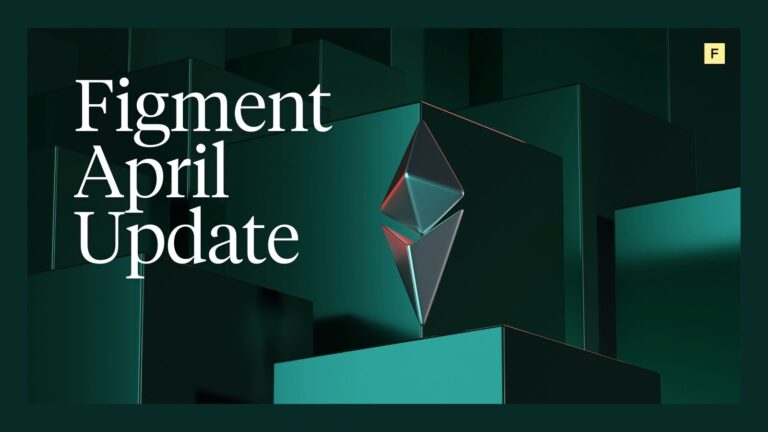What is Polkadot?
Polkadot is a decentralized interoperability protocol designed to facilitate secure communication between blockchains that share security. Polkadot’s architecture aims to make it fast and scalable. Polkadot achieves this via parallel blockchains, known as ‘parachains’, reducing the load on the main Polkadot chain, also known as the Relay Chain. Polkadot is considered a Layer-0 protocol allowing entire blockchains to be built on top of it, unlike Layer-1 blockchains built for protocol deployment on connected layers.
What problem does Polkadot solve?
Scalability – With the relay chain at the center, Polkadot’s blockchain design allows the parachains to run in parallel with each other, instead of synchronously. This design leads to much higher throughput compared to chains like Ethereum. In addition, more parachains are added through auctions that prevent the network from getting congested. Security of all connected protocols is then shared through the relay chain and incentivizes parachain operators to stay on the platform, in turn strengthening the security proposition of the Polkadot Ecosystem.
Interoperability – Polkadot also focuses on interoperability through XCM (Cross-Consensus Message), XCMP (Cross-Chain Messaging Protocol), and bridges to other networks.
Innovation (Substrate) – The substrate framework makes it easy to build a custom blockchain on polkadot and connect to Polkadot. Substrate brings Polkadot’s interoperability and security and attracts developers to the network.
DOT & Tokenomics
Polkadot’s DOT token serves four main functions. First and foremost, DOT is used for economic purposes within the Polkadot ecosystem. DOT is an inflationary token. Inflation is determined by the staking rate (total amount staked over total token supply). With parachains already being active on Polkadot that ideal staking rate is 50% which stabilizes the network.
This ideal staking rate also depends on the number of parachains and the amount of liquidity locked for parachain slots. Depending on the staking rate being above or below the ideal staking rate DOT tokens are minted or burned. If the staking rate drops below the ideal staking rate more tokens will be minted, increasing inflation and allowing Polkadot to offer higher rewards to attract more nominators (stakers) to the network to help secure it. If the staking rate goes above the ideal staking rate more DOT tokens are distributed to the Polkadot treasury to reduce inflation and rewards as the network is secure and risk reduced.
Misbehaving validators and nominators delegating to these validators may have a portion of the DOT stake slashed in the case of malicious behavior, scaled by the number of offending validators (further detail under ‘Slashing’). Additionally, DOT tokens are used for governance and for parachain auctions where it is determined which projects get a parachain slot.
Staking on Polkadot
Polkadot uses a unique form of proof of stake called Nominated Proof of Stake (NPoS) to secure the network. DOT token holders (nominators) nominate validators such as Figment to use their DOT tokens to secure the network. In doing so, delegators support validators to be in the active set of validators. Validators then use the weight of tokens from the nominators and their self-stake (validator-held-tokens) to qualify for election in to the group of validators who produce blocks for both the Polkadot Relay Chain that validate the transaction headers for both transactions on the base chain and batches of transactions posted to the base chain from Parachains, the Polkadot Ecosystem equivalent of a Layer 1 network.
Token holders bond (lock up) their DOT tokens for 28 days. They can then nominate up to 16 validators with their bonded DOT tokens. It is recommended to carefully investigate validators before nominating to their nodes. The Polkadot explorer will provide information on DOT rewards, slashing, block production and often their on-chain identity (alternatively the subscan explorer is popular).
Reward distribution is an important aspect of validator selection on Polkadot, as NPoS distributes rewards equally across all validators. For example, a validator with 1000 DOT (Validator A) nominated to its node would receive the same amount as a validator with 800 DOT (Validator B), provided they are both elected into the active set of validators. Nominating 100 DOT to validator A will return less reward than nominating the same amount to Validator B as the rewards are distributed proportionally within the validator pools. Read more on this here.
View Figment’s staking guide for more details on the nomination process.
Slashing
Polkadot has slashing conditions that protect the network from malicious behavior by validators. There are three reasons for slashing:
- Unresponsiveness – Failure to produce blocks in 4 hours
- GRANDPA Equivocation – Signing 2 or more votes in the same round on different chains
- BABE Equivocation – Producing 2 or more blocks on the Relay Chain in the same time slot
Validators are slashed a fixed percentage of their nomination. This means that validators with higher nominations run a higher risk. This is a further incentive to nominators to select validators with a lower stake, which in turn helps decentralize the network.
Slashed DOT goes to the treasury instead of getting burned. This allows slashing penalties to be reverted in case the slashing event occurred through no fault of their own. For more detail on slashing penalties on Polkadot please see this article.
Governance
Polkadot has implemented an advanced governance mechanism that enables the community of token holders to change nearly everything about the protocol. Changes are effected through stake-weighted governance proposals.
Polkadot combines an amorphous state-transition model (on-chain) with on-chain voting mechanisms (referenda) with adaptive super-majority thresholds and batch approval voting. Both token holders and the Council (elected by DOT holders) can propose changes which will then be voted on.
Team
Parity Technologies together with the Web3 Foundation have developed and launched Polkadot. Parity Technologies was founded by Gavin Wood and Jutta Steiner. Gavin Wood co-founded Ethereum and served as CTO for two years. Jutta Steiner is a trained mathematician and was Ethereum’s first security chief. Together they started Parity Technologies and the Web3 Foundation with the goal of developing infrastructure for Ethereum. Eventually they started development of Polkadot. They have since built a capable team at Parity Technologies that continues to advance the Web3 vision through Polkadot.
Future Outlook
Polkadot’s development and ecosystem have made great strides but still more is to come. Currently, Polkadot interchain communication is running through a slimmed-down version called HRMP (Horizontal Relay-routed Message Passing) but its main communication protocol XCMP (Cross-Chain Message Passing) is in development. This will allow parachains and dApps hosted on them guaranteed, trustless ordered delivery of messages between connected parachains.
Parathreads will allow competing parachains to temporarily share a parachain slot to participate in Polkadot security. Projects that do not need a full parachain slot or cannot afford one are able to participate in the network. Likewise, parachains that no longer require a parachain slot can leave their slot and still continue using Polkadot’s Relay Chain. This will further broaden the Polkadot ecosystem to projects with less financial firepower but valuable utility.
Parachain auctions started in late 2021 but have garnered great attention and many projects competing for the limited number of parachain slots during this measured rollout of slots. Interest in the auctions remains high with many projects looking to secure a slot. This dynamic will continue and Polkadot’s ecosystem will thrive as a great multichain network.
Figment + Polkadot
Figment is one of the world’s leading providers of blockchain infrastructure. Our mission is to empower investors and developers to build Web3, the next generation of the Internet. We offer staking and node services on over 60+ networks, including Polkadot, and have been involved with the Polkadot foundation for many years.
We also support Polkadot through Datahub, allowing developers to access infrastructure such as direct access to Polkadot’s RPC, Substrate’s Sidecar API, and Figment’s enriched API & staking indexer via our highly available full node infrastructure. We stand apart with our rock-solid infrastructure, deep commitment to Web3, expansive protocol support, and our developer platform, DataHub.


